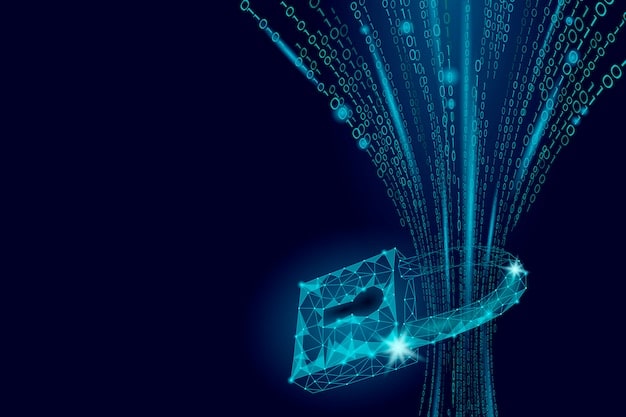US Fintech Cybersecurity: New Regulations & Investment Protection

US Fintech Cybersecurity Threats: What New Regulations Are Being Implemented and How Can You Protect Your Investments? This article explores the evolving cybersecurity landscape in US fintech, detailing new regulations and practical strategies for safeguarding investments against emerging threats.
The US fintech sector is booming, but with rapid growth comes increased cybersecurity risks. Understanding the US Fintech Cybersecurity Threats: What New Regulations Are Being Implemented and How Can You Protect Your Investments? is crucial to safeguard your assets.
Understanding the Landscape of Fintech Cybersecurity in the US
The fintech industry in the US has experienced exponential growth over the last decade. This growth has created unprecedented opportunities for innovation and efficiency, revolutionizing various aspects of financial services. However, it has also brought about significant cybersecurity challenges.
Fintech companies handle vast amounts of sensitive data, including personal financial information, transaction details, and proprietary algorithms. The concentration of this data makes them prime targets for cyberattacks.

Why Fintech Is a Prime Target
The unique nature of fintech makes it particularly vulnerable. The interconnectedness of systems, reliance on APIs, and the sheer volume of transactions processed daily all contribute to an expanded attack surface.
- Data Volume: The massive amount of financial and personal data processed by fintech companies makes them alluring targets for cybercriminals.
- Interconnected Systems: Fintech companies often rely on APIs to integrate with various financial institutions, creating multiple entry points for potential breaches.
- Regulatory Scrutiny: Compliance with regulations like GDPR, CCPA, and others adds complexity and cost, making preparedness essential.
The evolving threat landscape requires continuous vigilance and adaptive security measures. It’s essential for fintech companies to stay ahead of cybercriminals, anticipating their tactics and implementing robust defenses.
Key US Regulations Shaping Fintech Cybersecurity
To combat the growing cybersecurity threats in the fintech sector, several US regulations have been implemented. These regulations aim to establish standards for data protection, incident response, and risk management.
Understanding these regulations is crucial for any fintech company operating in the US. Compliance is not only a legal requirement but also a key factor in building trust with customers and investors.
Overview of Key Regulations
Here’s a breakdown of the main regulations affecting fintech cybersecurity.
- Gramm-Leach-Bliley Act (GLBA): Requires financial institutions to protect customers’ nonpublic personal information.
- New York Department of Financial Services (NYDFS) Cybersecurity Regulation: Sets cybersecurity requirements for financial institutions operating in New York.
- California Consumer Privacy Act (CCPA): Gives California consumers more control over their personal data.
These regulations mandate that fintech companies implement comprehensive security programs, conduct regular risk assessments, and report cybersecurity incidents promptly. Failing to comply can result in significant fines and reputational damage.
Staying informed about these regulations and adapting security measures accordingly is essential for maintaining a robust cybersecurity posture.
Implementing Robust Cybersecurity Measures: Best Practices
Protecting your investments in the US fintech sector requires implementing robust cybersecurity measures. These measures should cover all aspects of your operations, from data encryption to employee training.
A proactive and comprehensive approach to cybersecurity can significantly reduce the risk of breaches and data loss. It also enhances investor confidence and fosters long-term growth.

Essential Security Practices
Here are some best practices for implementing robust cybersecurity measures in your fintech company.
- Data Encryption: Encrypt sensitive data both in transit and at rest to prevent unauthorized access.
- Multi-Factor Authentication (MFA): Implement MFA for all user accounts to add an extra layer of security.
- Regular Security Audits: Conduct regular security audits to identify vulnerabilities and assess the effectiveness of your security controls.
In addition to these technical measures, it’s crucial to have a strong incident response plan in place. This plan should outline the steps to take in the event of a cybersecurity incident, including containment, eradication, and recovery.
By following these best practices, fintech companies can significantly enhance their cybersecurity posture and protect their investments from evolving threats.
Employee Training and Awareness Programs
One of the most overlooked aspects of cybersecurity is employee training and awareness. Human error is a significant factor in many cybersecurity incidents.
Investing in comprehensive training programs can significantly reduce the risk of employees falling victim to phishing attacks, social engineering, and other common threats.
Creating a Security-Conscious Culture
Cultivating a security-conscious culture within your organization requires ongoing training and reinforcement.
Regular awareness campaigns, simulated phishing exercises, and clear communication of security policies can help employees understand the importance of cybersecurity and their role in protecting the company’s assets.
- Phishing Simulations: Conduct regular phishing simulations to test employees’ awareness and ability to identify malicious emails.
- Security Awareness Training: Provide ongoing training on topics such as password security, data protection, and incident reporting.
- Policy Reinforcement: Regularly communicate and reinforce security policies to ensure employees understand and adhere to them.
By prioritizing employee training and awareness, fintech companies can significantly strengthen their overall cybersecurity posture and reduce the risk of human error-related incidents.
It’s essential to create an environment where employees feel empowered to report suspicious activity and understand the importance of adhering to security protocols.
Emerging Technologies for Enhanced Cybersecurity
As cybersecurity threats continue to evolve, emerging technologies offer new ways to enhance protection. These technologies leverage AI, machine learning, and other advanced techniques to detect and prevent cyberattacks.
Adopting these technologies can provide fintech companies with a competitive advantage in the fight against cybercrime. It also demonstrates a commitment to innovation and security, which can attract investors and customers.
Innovative Solutions
Here are some emerging technologies that can enhance cybersecurity in the fintech sector.
- Artificial Intelligence (AI): AI can be used to detect anomalies, predict threats, and automate security responses.
- Machine Learning (ML): ML algorithms can analyze vast amounts of data to identify patterns of malicious activity and improve threat detection accuracy.
- Blockchain Technology: Blockchain can enhance data security and integrity by providing a tamper-proof ledger of transactions.
However, implementing these technologies requires careful planning and execution. It’s crucial to understand the capabilities and limitations of each technology and to integrate them into your existing security infrastructure effectively.
Incident Response and Disaster Recovery Planning
Even with the best security measures in place, cybersecurity incidents can still occur. Having a well-defined incident response and disaster recovery plan is crucial for minimizing the impact of such incidents.
A comprehensive plan should outline the steps to take in the event of a breach, data loss, or other cybersecurity event. It should also include procedures for restoring systems, recovering data, and communicating with stakeholders.
Key Components of an Incident Response Plan
An effective incident response plan should include the following elements.
- Detection and Analysis: Quickly identify and analyze the scope and impact of the incident.
- Containment: Isolate affected systems to prevent further damage.
- Eradication: Remove the threat and restore systems to a secure state.
- Recovery: Restore data and systems to normal operations.
Regularly testing and updating your incident response plan is essential to ensure its effectiveness. This includes conducting tabletop exercises, simulating real-world scenarios, and incorporating lessons learned from past incidents.
By having a robust incident response plan in place, fintech companies can minimize the disruption caused by cybersecurity incidents and protect their investments from long-term damage.
| Key Aspect | Brief Description |
|---|---|
| 🛡️ Regulations | GLBA, NYDFS, CCPA set standards for data protection and incident response. |
| 🔐 Security Measures | Encryption, MFA, audits, and incident response planning are crucial for protection. |
| 🧑💻 Employee Training | Training programs and awareness campaigns reduce human error risks. |
| 🤖 Emerging Tech | AI, ML, and blockchain enhance threat detection and data security. |
Frequently Asked Questions
▼
The Gramm-Leach-Bliley Act (GLBA) requires financial institutions to protect customers’ nonpublic personal information. It mandates the implementation of security programs and regular risk assessments.
▼
Multi-factor authentication (MFA) adds an extra layer of security to user accounts. It requires users to provide multiple verification factors, such as a password and a code from a mobile device.
▼
AI and machine learning can analyze vast amounts of data to identify patterns of malicious activity. They can also automate security responses and improve threat detection accuracy in real-time.
▼
An incident response plan should include procedures for detection and analysis, containment, eradication, and recovery. It should also outline communication protocols with stakeholders.
▼
Employee training reduces the risk of human error-related incidents. Training programs should cover topics such as phishing awareness, password security, and data protection protocols.
Conclusion
Navigating the complex landscape of US fintech cybersecurity requires a multifaceted approach. By understanding the regulatory environment, implementing robust security measures, prioritizing employee training, and embracing emerging technologies, fintech companies can effectively protect their investments and build a secure foundation for future growth.





